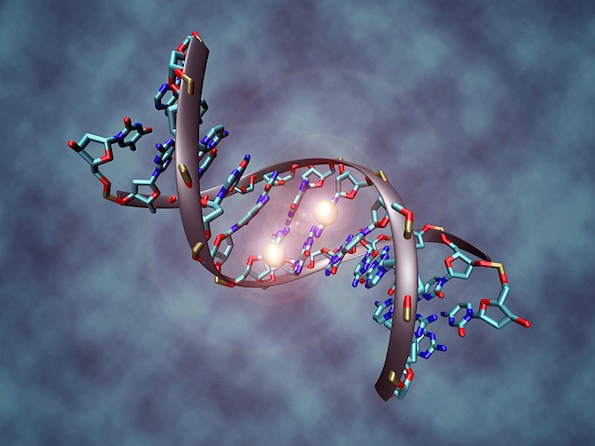- Hanching Chung 多 虧此題. 我才有機會再訪"...有約" 那些也是有點"勵志" 等客套. Ki Wi的對談似乎沒刊出. 我對校長的"顧左右而言它"不太滿意. 學生的英文程度跟老師用破英文講課是兩碼子事---所謂上課用英文 在台灣大小/公私立大學已有近10年的歷史----所謂"東海上2年英文課等所需的資源"等議題2-3年前的"關懷母校"等"論檀"及後續有些討論 譬如說我認為母校的博雅書院是浪費 搞錯方向 比較簡單的是要求學生有約16學分(任意說的) 的語言教育 (含電腦語言/知識 中英文的寫作也很重要) 這也許是"胡說八道" 不過我也不是隨便說說的.....謝謝
追記2001一汪永祺老師--熊維強(Peter Hsiung)- 鍾漢清讀書會中的富蘭克林《哈佛學者》/ Benjamin Franklin (B. F.)富蘭克林 2013
Books 書海微瀾: 追記2001一汪永祺老師--熊維強(Peter Hsiung)- 鍾漢清讀書會中的富蘭克林《哈佛學者》/ Benjamin Franklin (B. F.)富蘭克林
hcbooks.blogspot.tw
What is epigenetics?
genome, genotype, phenotype, epigenetic, genetic,e...
What is epigenetics?

Generally speaking (and ignoring still-experimental technologies such as gene therapy), the genes an animal is born with are those it is stuck with. Collectively, those genes encode every protein the animal produces. One common analogy is that the genome is a bit like a recipe book, with the genes (and the proteins they encode) mixed together to create a complete organism. Skilled chefs, though, are able to vary the taste of a dish by choosing precisely what quantities of individual ingredients go into the pot, and that, more or less, is what epigenetic mechanisms do. By adding specific chemicals to parts of the DNA, or by controlling how the DNA is packaged, an organism can adjust the degree to which particular genes are turned into proteins (the extent to which they are "expressed", in the jargon).
That ability to tinker with the genome is one way in which different types of cell within an organism can specialise, allowing liver, nerve and bone cells to be created from the same genetic blueprint. It also allows organisms to react to changes in circumstance—as happens when fat cells alter the way in which they express their genomes in response to exercise. But what has really made biologists sit up and take note is evidence that epigenetic states can be passed on to an animal's offspring. This provides a mechanism over and above the passing on of genes—hence the prefix "epi" (Greek for over or above)—by which traits can be transferred from one generation to the next. Stressed rats, for instance, produce anxious pups, and those pups remain anxious even when handed off to unstressed mothers in soothing environments. A landmark study in Sweden discovered that a grandparent's experience of either famine or plenty had implications for the lifespan of the next generation—and the one after that, too. The grandparents' genes, in other words, had been "reprogrammed", either by hardship or luxury, and the reprogramming was transmitted along with the genes down two further generations.
The discovery that acquired characteristics can be inherited too is big news. For most of the 20th century, biology held that genes were the sole mechanism of inheritance, and that changes in genes occured only through the random walk of mutation and the relentless sieve of natural selection. Readers who remember their scientific history may by this point be thinking of Jean-Baptiste Lamarck, a 19th-century biologist who held that traits acquired by animals during their lives could be passed down to their descendants. Epigenetic mechanisms do not, however, permanently alter the DNA sequence itself, and even those epigenetic changes which are inherited seem subsequently reversible. But the idea that acquired characteristics can be inherited at all is still an important and novel one, the implications of which are still being teased out by researchers.
(Picture credit: Christoph Bock/Max Planck Institute for Informatics, via Wikimedia)
半夜
這是唐香燕-陳忠信的兒子和夥伴的介紹
陳是我擬訂的2014年初東海"王錦堂紀念演講"的講師之一.
它的約略辦法. 我先前已簡單講過.
請羅院長考慮我的提議 (捐款2014年元月初匯入東海)
唐跟她兒子商量. 選題排程.....
(
請各位參考


沒有留言:
張貼留言